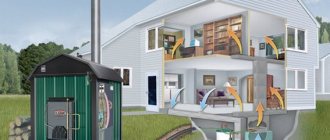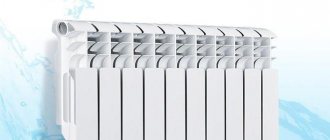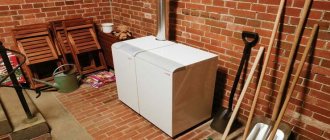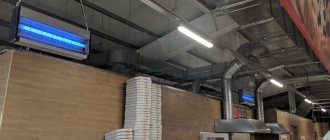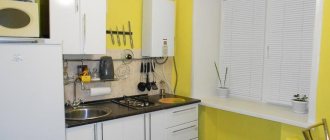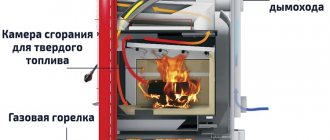Heating units JSC
Air heating units AO and SDT are used to heat industrial, warehouse, administrative and other premises. These units provide areas with a large area of warm, evenly distributed air and maintain the set temperature for a long time. Their power and performance depends on the size.
AO air heating unit is a structure consisting of an axial fan, an air heater and a frame used to install the unit in working position. AO and STD can also be suspended on brackets. During its operation, the air blown by the fan is heated by the air heater and supplied to the heated area.
Concern "Medved" offers efficient air heating units, the price of which attracts with its democratic character. The concern's products are certified and have a 2-year warranty. The heating and ventilation unit from our concern is the ideal solution for heating large rooms.
An analogue of AO is the AVO air heating unit, which is also designed for air heating of structures using hot water as a heat carrier. It is installed in industrial and commercial buildings.
The AVO unit has a number of advantages. Along with high performance, it features an attractive design and a lightweight body. This device can be presented in a vertical or horizontal working position. It is suitable for use in moderately cold climates and has 4 placement category according to GOST 15150.
Steam heating units
Steam heating units are designed for heating agricultural, industrial and civil premises. For the operation of these units, dry steam is used as a heat carrier, with a temperature below 180 ° C and a maximum pressure of 1.2 MPa. All such models consist of a set of standard elements: an axial fan and a steam heater. The heating steam unit is a fairly simple, powerful, safe and relatively inexpensive piece of equipment.
An air heating unit is, one might say, a large heater that runs on electricity. It first heats up, then distributes its heat throughout the room with the help of the fan and the louvers. An electric device is capable of heating a large room in a matter of minutes. It can also be installed locally, for example, in production works in hangars or other similar premises.
Fig. one
The air heating unit is specially designed to heat large institutions. It is used: in hangars, for installation in production halls, in car repair shops, in a car wash, in garages, car dealerships, in warehouses, in shopping centers, in hypermarkets and supermarkets, in various stores, in conference rooms, in showrooms , on farms, in greenhouses, etc.
For such a heating system, you do not have to spend a lot of money, since air heating units are easy to install and are (compared to other types of heating) inexpensive.
Main varieties
The described heaters can be classified into two categories:
- type of heating element;
- air consumption.
When low air flow rates are required, an axial fan is traditionally used.When it comes to more powerful heating systems that must serve large buildings or rooms, centrifugal fans are used. In this case, an air duct is fixed to the heat exchanger flange from the free side, which distributes heat in one room or the whole structure.
The air heating unit, as mentioned above, can be subdivided according to the type of heat exchangers, they are:
- steam;
- water;
- electric.
The area of use of electric heaters is very limited, this is due to several reasons. The first of them is expressed in the lack of electrical power on the line. Indeed, to obtain one kilowatt of heat, one kilowatt of electricity is needed. Thus, for a room with an area of 500 m2, a power of 50 kW will be required. There are few networks that are designed to supply such a volume of energy.
Another difficulty is expressed in the control of heating, since work at maximum is not always required, but electrical units of high power cannot be smoothly controlled. This requires expensive electrical equipment. This suggests that manufacturers quite often implement three- or two-stage heating. These units are most often used in medium to small sized rooms.
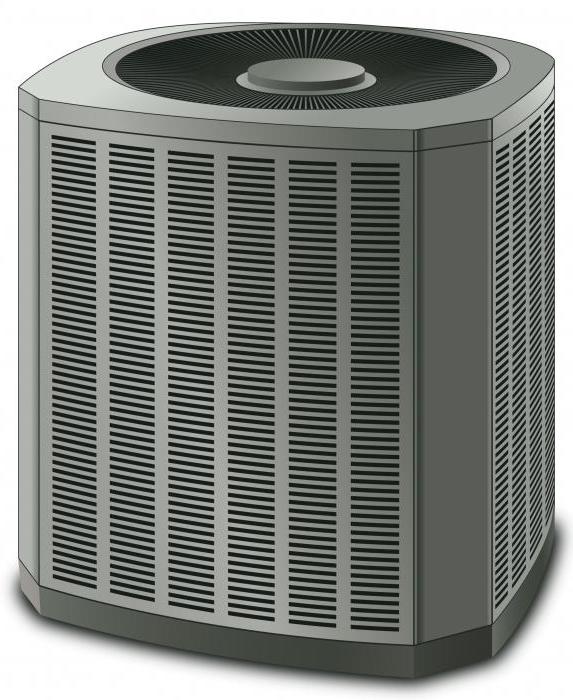
The design of electrical apparatus for heating
The air heating unit has the following components:
- Axial fan;
- It is also equipped with an electric heater;
- The case, which has a polymer coating.
Fig. 2
The heater contains two thermostats that protect the unit from overheating. The first protection is automatic restart. It will work on the air heating unit if the temperature rises above 50 degrees. The heater control circuit is automatically closed after the thermostat has cooled down. The second protection is manual restart. Such protection will work when the temperature rises above 90 degrees.
The fan of an air electric apparatus has an induction motor which has an external rotor. Each motor has a built-in thermal protection that can restart automatically.
What must be done in order for the air heating unit to work correctly and in a safe mode:
- Heating power and temperature should be automatically adjusted;
- If the fan of the air heating system has stopped, or the air flow rate has decreased, then the power supply to the heater should be blocked. Also, the power supply must be blocked even when the built-in protection of the thermostats against overheating is triggered;
- A circuit breaker must also be installed on the heater so that power can be supplied without problems. Then the operation must be selected according to the power of the heater itself;
- In order to be able to control the operating modes of an electric air vehicle, you can additionally purchase automation units (UET-14D, UET-30D).
The advantages of this heating system
Air heating units have, of course, many advantages. And all due to the fact that they have great power, because of which huge rooms warm up very quickly.
So, the main advantages of these electrical devices:
- After switching on, these partings begin to work immediately with all their power, thanks to which the room heats up quickly;
- This heating system has some inertia, due to which both thermal conditions and zonal heating of premises can be used;
- Air heating units have a high heating capacity;
- This system for heating is considered very economical, since when buying all the necessary materials, you will not spend as much as you would spend on a standard heating system (gas, water).
Now on the market for heating equipment, there is an incredible number of electrical devices. They come in various capacities, therefore, before buying, you must definitely consult with a professional so that he would suggest which unit is better to take for this or that room. Also, some models may have modern technical indicators: touchscreen display, liquid crystal display, by which you can see all the necessary information.
Fig. 3
Air heating unit
Electric apparatus with water heat exchanger
Devices with a water heat exchanger belong to the AOB series.
«> Air heating units with a water heat exchanger are needed in order to create recirculation of air heating in large rooms such as:
- Industrial building;
- Warehouses;
- Living spaces;
- Commercial institutions.
Air heating units that have a water heat exchanger are needed only for huge rooms. The most important advantage of devices with a water heat exchanger is the rapid heating of either the entire room or part of it. In this case, the unit, which has a water heat exchanger, is installed locally.
It is also good that air devices with a water heat exchanger are relatively inexpensive (when compared with other heating systems that have water heat exchangers and not only), so you do not have to invest a lot of money on devices with a water heat exchanger.
The air heating unit, which has a water heat exchanger, has a high heating capacity. The unit with water heat exchanger uses a powerful fan and high efficiency air heater, so the water system heats the room quickly.
Heaters with water and steam heat exchangers
The scope of application of water heat exchangers (otherwise - heaters) is unlimited. An example of a low-power air unit is a fan coil, which is part of the air conditioning system of a private house. True, it serves both for heating and for cooling rooms, it depends on the temperature of the coolant supplied to it. However, the principle of operation and design of the fan coil unit are the same, there are differences in performance and the availability of additional functions, for example, air filtration.
One of the most common devices used in buildings of any purpose is the Volcano heating unit. These local heating devices, originally from Poland, are already in operation and continue to be installed at industrial enterprises in all post-Soviet countries. They have established themselves as reliable heating equipment from the middle price category. The technical characteristics of the Volcano range are presented in the table:
Note. The maximum operating temperature of the coolant is 120 ° C, the pressure is 16 bar.
The devices, whose bodies are made of plastic, stand out for their modern design. The connection to the line with the coolant is carried out through a two-way valve controlled by the automatics, as shown in the diagram:


Russian heating units AO 2 can serve as an example of steam heaters. Although their heat exchangers are also capable of operating on hot water, then the heat output will be less. Such systems are being implemented at enterprises where steam is produced for technological needs, and is used for heating in parallel. Technical characteristics of the AO 2 model range can be found in the table:
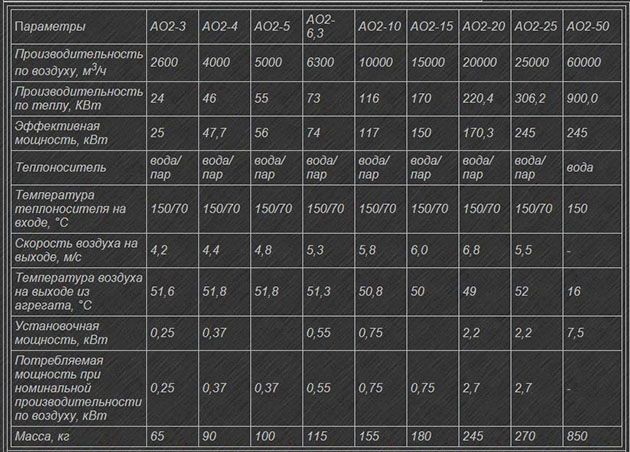

Compared to the "Poles", this is a more powerful series of devices, especially when supplying steam to the heater.This increases the efficiency of air heaters, but also creates a number of difficulties associated again with heating control, condensate return and the service life of devices and fittings.


Water heating units
This air-heating unit is designed to heat the room of the water heating system (water heating medium, which heats the air, distributes it evenly throughout the room using a fan and directing louvers).
Fig. four
Air heating units with water heat exchanger
The rotation speed of the fan on the air heating unit, which has a water heat carrier, can be adjusted. Regulation takes place using a transformer regulator. If the speed of rotation of the fans on the apparatus with a water heat carrier decreases, then the air flow rate decreases. There are also many options for how to regulate the heat transfer water.
How can you mount this air heating unit:
- Air electric fan can be installed on mills (vertically);
- Also, this water-cooled unit can be installed on the ceiling (horizontally).
Advantages of the air unit, which has a water coolant:
- The room heats up very quickly thanks to such a device;
- Due to the low inertia of the heating system, it can be used both for heating the entire room and for zone heating;
- The air heating unit has a high heating capacity;
- This heating system is much cheaper than other hot water heating systems for large rooms.
In essence, these are the same fan heaters, but there are still some differences. So, the thermal power of these devices is much higher, in no way compared with two kilowatts of fan heaters. Also, these units are designed more for industrial premises, so the main thing in them is reliability and durability. At the same time, external characteristics are of secondary importance.
Important!
If you have the time and desire, you can find a model that would look good at home or, for example, in the office. There are very attractive units made of high-strength plastic.
And now, just a few words about the heat source.
Advantages of air heating units
If we talk about how diesel air heaters, as well as the same devices operating with a different heat source, differ from other standard heating devices, we cannot fail to mention the following list of their advantages:
- the rate at which the room is heated
... Due to the blowing off, more heat will be used than in traditional convectors; - ensuring uniform heating
... With the help of built-in dampers, the heated air flow can be directed in any direction, which cannot be said about convection devices, where warm air can only move upward (for more details: "Household convector: principle of operation and installation"); - high efficiency indicators
, which is explained by the previously mentioned ability to evenly distribute warm air; - simplicity and ease of installation
... The design is based on only two pipes - supply and return, so their installation can be done quickly, and in the case of a large pipeline, this process will significantly slow down and become more complicated.
Speaking about the cost of air heating units, it is worth saying that, compared to water heating, such equipment is quite profitable, since the price of air heating devices is approximately the same as the price of other heating mechanisms, but due to the simplicity and low cost of installation, the total amount is less.
Water heat exchanger
Air heating units using water heat exchangers heat the air in the building as quickly as possible due to the heat carried by the circulating water. At the same time, the pipeline has ribbing inside, which increases heat transfer. When blowing, this heat exchange only increases. Having read all this, you can mistakenly confuse this unit with conventional fan coil units.
Electricity
Electrical devices of this kind, both structurally and functionally, are very close to household fan heaters - electricity heats a heat exchanger, to which air is driven by a fan. The dampers direct it further to the desired part of the room.
But the differences between them, of course, are:
- Open-type spirals are practically not used. They can serve for a relatively short time, and the dust will burn if it gets on them.
- These units are designed for heating a large room. These are no longer household heaters, here the power is measured in tens of kilowatts.
Electricity as a coolant in an air heating unit
As mentioned above, air heating units in many ways resemble traditional thermal fans. The principle of operation is as follows: the heating of the heat exchange element is carried out using the energy of electricity, and then the heated air is directed through special dampers to the required part of the room.
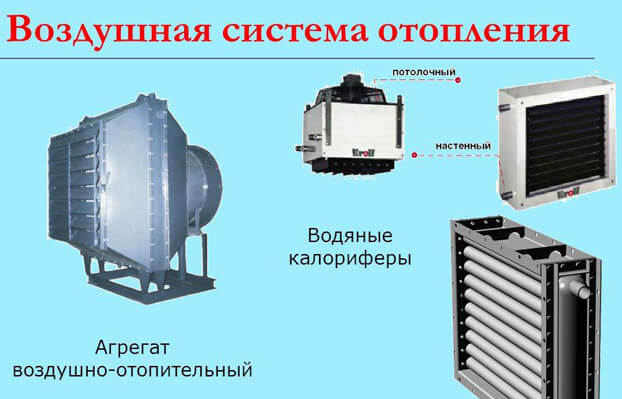

However, there are some obvious differences between this device:
- Firstly, the equipment for air heating excludes the use of open-type spirals, which is due to the short service life of these functional elements and their tendency to contamination. The basis of the heat exchanger is made up of tubular electric heaters (TENs), equipped with special ribbing, which allows improving the heat transfer rates.
- The use of air heating units is not typical for small premises, since their capacity is so great that it will be impractical to use them for domestic needs.
What are the main advantages of air heating units?
Indeed, in what? Why are they better than, say, radiator wiring around the entire perimeter of the building or, for example, electric convectors? Let's get a look.
You may also be interested in our step-by-step instructions.
Average cost of air heaters
What can be said is that their profitability is significantly higher than conventional water heating, while the power is only growing.
For example: an AVO 42 model air heating device costs about 12,000 rubles
, while its thermal
power is approximately 12 kilowatts
... Conversely, a water heating system with a similar power value costs almost the same, of course, if you do not take into account the installation cost.
But! The 104th model of the same AVO device, whose power already reaches 154 kW, costs almost 53,000 today, while a water heating system with the same power is almost twice as expensive!
Where is this type of heating used?
Often, such heating can be found in the following places:
- In production workshops.
- Vegetable bases.
- Warehouses.
- Farmyards.
- Stores.
- Premises in which grain is stored.
Important!
Among other things, air heating units can be installed not only indoors, but also outdoors. This feature allows you to significantly increase the safety of employees of the enterprise.
Precautions for use
According to safety precautions when handling such a heating system, it is strictly forbidden to use such units in those rooms where flammable or explosive substances may be present in the air.In addition, this should not be done if there is electrically conductive dust in the air. Finally, when there is a possibility that poisonous or corrosive substances will be released.
Also, for proper use, you need to know what the standard unit consists of.
- Switchboard. An optional component of the system, mounted only if the owner wishes. It optimizes the temperature control procedure.
- Radial fan.
- Transition pipe.
- Air blower.
As we can see, the design of the device contains a minimum of details, due to which its operation is simple. Actually, the same can be said about editing, but about it a little later.
Important!
Installation should be carried out exclusively by those individuals who have undergone appropriate training and have documents regarding the fact that they can be admitted to such equipment. If this is not followed, then there is a likelihood of a risk to life.
And now - about the installation features.
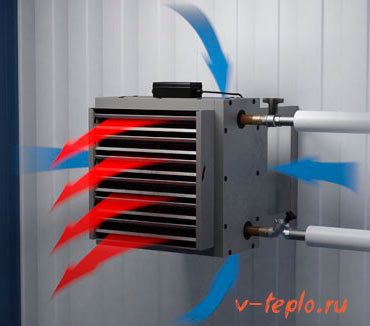

Brief video review of the VOLCANO air unit
As a conclusion
As a result, I would like to note the fact that air heating systems for heating a room can perform two important functions at once:
- First of all, this is the direct "responsibility" of the system - heating the room.
- In addition, the unit can also replace ventilation.
We believe that no one will argue with the fact that this prospect is more than attractive, since it can be assumed that a person will buy two devices for the price of one. If you are well versed in the heating equipment market, then you probably know that there are no more such offers on it.
The topic of our article is air heating units. What are they? By whom and why are they produced? What are their advantages over traditional radiators and convectors? Do their connection somehow have any peculiarities that are useful to know? Let's take a look at all this.
The photo shows a warehouse of heating equipment of the Russian company Veza. It is easy to see that most of the hall is occupied by air heating units.
Main settings
First, it must be said that there are many types of similar devices that may have certain differences. Moreover, if you disassemble a typical AO air heating unit, you can make sure that it practically does not differ from more expensive models and has a similar design. However, it is immediately worth noting the fact that such products can work both for heating and for heating. (See also the article Air heating: features.)
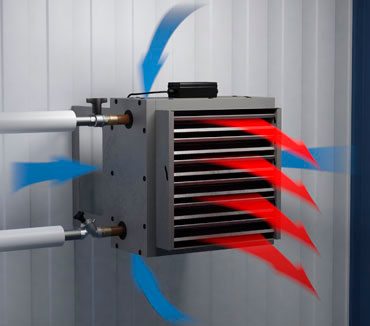

A variety of similar structures that use air lines for their work
Design
- First of all, it should be noted that the AVO 42 air heating unit and the like have an original mounting system on the body with their own fixation systems... They allow you to install the device in almost any position and even on the most uncomfortable surface.
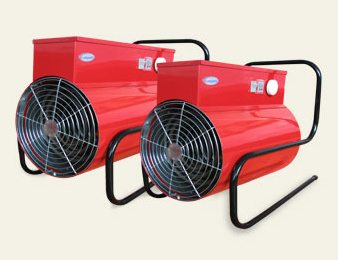

Some types of such devices are very often used by modern builders to maintain a certain temperature in a room or when installing stretch ceilings.
- The main element that all electric air heating units have is the fan... It creates a stream of air that is directed inside the room and carries a certain temperature.
- It is also necessary to mention the special heating element.... It is placed in front of the fan itself and serves to create a certain temperature. At the same time, there are air heating units with a water heat exchanger, which use a kind of radiator as this part.


Thermal power table for products of this type from a well-known manufacturer
- Special attention should be paid to special louvres in the form of blinds.... They can change their angle and thereby redirect air flows. However, in models of type AO 2 3, they usually have a stationary position or are manually adjusted, when in more expensive modifications this process is fully automated.
- Given that most of these units are installed at a certain height, they need a special controller.... At the same time, Volcano air heating units can be combined into a single network and controlled by just one device.
Advice! When choosing such systems, first of all, they look at the power of the heating element and fan. It is also worth clarifying the data on the manufacturer of the electric motor, since the life of the product depends on the quality of this unit.


Using various types of installation, you can achieve special effects inherent in a particular type of room and its volume.
Advantages and disadvantages
First, it must be said that such devices can serve rooms with a large volume. At the same time, such a type of model as STD 300 was specially developed for this type of work. Such equipment is usually equipped with rather powerful fans that can operate in several modes.
Various models of such devices have their own additional features and power, although these particular products can be called more typical for industrial premises.
Considering that air heating units carry out a directed movement of flows, the speed of warming up the room becomes the maximum among products of this type. It is thanks to these properties that these devices are actively used in industrial or public buildings, where entrance doors are often opened or there are gaps in the insulation.


Graphic models showing the principle of arrangement of such equipment in rooms of various types and volumes
All designs of type VR1 and the like have louvered grilles, and they can redirect hot air in the desired direction. This makes it very possible to heat certain zones, arranging their own circulation of the masses in the required direction.
It is also worth noting that such heaters have a fairly simple design and an elementary installation method. That is why it is easy to install them with your own hands, without the help of specialists.
A graphical model of the distribution of air masses when using a whole system of such heaters
Among the disadvantages of these systems are high heating costs and a certain level of noise. However, given the field of application of such structures and their advantages, this is practically insignificant.
Advice! Typically, the grilles of these heaters are directed downward, while the device itself is installed at a height. So hot air enters the lower layers and rises from there due to the temperature, warming up the entire room.
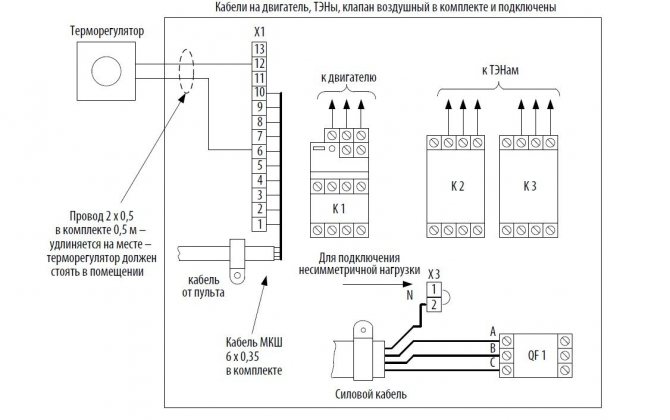

A variant of the control circuit for connecting similar equipment using a separate thermostat
Recommendations of the masters
- Models of the STD type are considered one of the most practical. However, steam or water is most often used to heat them. Therefore, this fact should be taken into account when choosing equipment.


Some installations of this type of heating are quite compact in size and can be carried if necessary.
- It is worth combining all devices into one network and connecting to the control panel. At the same time, the heating area and the fan itself are mounted in different circuits, so that in the summer the structure can be used as ordinary fans.
- It is necessary to select the power of the products in such a way that the system works at optimal parameters. Otherwise, there will be high costs for food, which means that the price will increase.
Modern heaters of this principle of operation can have a pretty good appearance that will fit into any interior.
What it is
In front of us, in essence, are ordinary fan heaters. With a few caveats:
- The devices have a high heat output.
Much more than the 2 kilowatts typical for a household fan heater. - In most cases, the units are designed for industrial premises.
Reliability, fault tolerance is a priority; the design of the device fades into the background.
However: if you wish, it is not difficult to find models of fan heaters that are not ashamed to be installed in a store or office. For example, the Tropic units are made in rather nice cases made of durable plastic.
- The source of thermal energy can be not only electricity, but also water.
We will dwell on the heat source in a little more detail.
Electricity
Electric air heating units are structurally and in fact exactly the same as the usual fan heater: the heat exchanger is heated by electricity; air is blown to it by a fan, which is then directed to the desired part of the room with the help of dampers.
There is, of course, a difference.
- Open spirals are rarely used.
Limited service life and the fact that dust and small debris will inevitably burn on the spiral against them. A typical heat exchanger is several tubular heaters, most often with fins that improve heat transfer.
Heaters - tubular heating elements with ribbing.
- The devices are designed for heating large rooms.
We are not talking about household heaters at all: typical power is in the tens of kilowatts. For example, the air heating unit of JSC EUR 20, produced by the UkrventSystems plant, consumes 250 kW.
Water
Air heating units with a water heat exchanger, as you might guess from their name, use the heat transferred by water to quickly heat the air in the room. Heat exchanger - pipes, again with fins, through which the coolant circulates. Airflow accelerates the exchange of heat with the ambient air.
And in this case, however, do not confuse the device with household fan coil units.
To understand the difference, let's read the specifications of the STD-300 P heating unit, produced by the Euromash group of companies:
- The operating temperature of the coolant is 150-180 degrees. Recall that residential buildings are not supplied with water with a temperature higher than 95 - 105 degrees, depending on the design of the heating system.
- Heat exchange surface area - 158-170 m2, depending on the type of heater used.
- The mass of the device is 530-790 kilograms.
There are, of course, more compact devices. For example, the same Euromash produces the AO 2 - 3 unit with a thermal capacity of 24 kilowatts and weighing only 70 kilograms. The bottom line, however, does not change: the device is incompatible with the central heating system.
However: the air - heating units Volcano VR1 and VR2, produced by the Polish company EuroHeat, are designed for a lower heat carrier temperature - 90C. If there is a separate elevator unit, they can still be used with central heating. Why do you need your own elevator? The fact is that when inserted into the general house heating system, the devices will give off the coolant cooled to an unacceptably low temperature. Radiators in neighboring apartments will stop heating.
Principle of operation
In industrial conditions, air heating systems have been used for a long time. After the invention of ventilation equipment, they were able to win well-deserved places in office buildings, shopping centers, cinemas, where the floor space is very large. The air heating unit can be used in a private house.
Such devices directly heat the air; this principle of operation is the simplest option.The air heating unit (AO) can be represented by an axial fan, which is located behind the heating element, blowing through it the air drawn in from the room.


Advantages of air heating units
And what, in fact, are these devices better than ordinary electric convectors or wiring of water radiators around the room?
- The speed of heating the room.
Forced blowing of the heat exchanger will take away much more heat from it than convection flows. - Uniform heat distribution.
The dampers allow the hot air to be directed in any direction. Convection currents rise only upward, as a result of which all the heat in the room is collected under the ceiling. - Economical against the background of convection heating
resulting from the same uniform heat distribution. In order for the temperature at the bottom of a warehouse with 10-meter ceilings to reach an acceptable 16-18C, the ceiling must be at least 30. In this case, most of the heat produced will be uselessly dissipated through the roof.
.
What's with the cost? Is it profitable?
Here we see an increase in profitability against the background of traditional hot water heating with an increase in the power of the device.
A simple example: an AVO-42 air heating unit costs 12,000 rubles with a thermal power of 12 kW. A hot water heating system with a comparable heat output will cost about the same amount excluding installation costs.
But the price of the AVO-104 device with a thermal power of 154 kilowatts is only 53,000, which is at least half the cost of pipes and radiators with a similar heat transfer.
Features of installation and operation
What is useful to know about these devices?
- Almost all air - heating electrical units have a capacity of more than 7 kW. They are powered exclusively by 380 volts. Any electrician with the appropriate admission can connect them with their own hands.
- It is better to calculate the cross-section of the wiring for connection based on 8 amperes per square millimeter. For example, a device that consumes 24 kilowatts requires a minimum wiring cross-section of 24000/380/8 = 7.89 mm2.
- Water air heaters are connected only and exclusively with steel pipes. Preferably galvanized: then you will not encounter problems of corrosion and overgrowth of deposits. Metal-plastic and polymer pipes are not designed for superheated water with a temperature of 150-180 degrees.
- For all types of fan heaters, it is recommended to install a coarse air filter (unless, of course, it is part of the design of the unit itself). The reason is clear: a fan jammed by any foreign object, at best, will simply burn out due to overheating of the motor winding. In the worst case, the heating elements of the device will go to the landfill after him.
